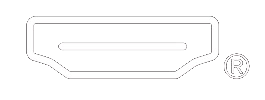HDMI Marketplace Update - Risks from Unlicensed Products, and HDMI 2.1a Sales Opportunities

(published in CE Pro, July 2022)
It's been over 20 years since the first HDMI Specification was introduced and there are always questions about the latest HDMI® trends. Here is a quick update based on trending topics received from HDMI Licensing Administrator, Inc. (HDMI LA), the official agent of the HDMI Specifications, from Trudi Bordi, vice president of licensing, and Brad Bramy, vice president of marketing and operations.
Q: What are licensed HDMI Products, and are unlicensed products the same as counterfeit HDMI products?
A: Trudi Bordi: Most importantly, manufacturers and resellers rely on doing business with licensed HDMI Adopters. A licensed product is produced by a manufacturer that is an official HDMI Adopter and has access to the current HDMI Specifications; and can claim compliance to the HDMI Specifications when their products are tested and certified at either an HDMI Authorized Test Center (ATC), or for HDMI 2.1a products, an HDMI Forum ATC.
Yes, unlicensed HDMI products are counterfeit and run the risk of being seized and a company is at risk of punitive actions.
Q: Is the list of HDMI Adopters on the hdmi.org website the best way to check for licensed manufacturers?
A: Trudi Bordi: Adopters are proudly listed on the HDMI.org website so the industry knows where to find licensed manufacturers. Adopters can also show their HDMI Adopter Certificate which has a unique QR code, and the scan displays the HDMI.org website adopter listing for verification. You can also ask to see the ATC Certificate for the product. Now, not all manufacturers need to be HDMI Adopters, and so they won't be on the list, but they still have to source from an adopter, and that can make verifying more complex. You just have to make sure your manufacturer is providing licensed HDMI products.
Q: What are the risks, and what are the punitive actions that can happened to a company marketing unlicensed HDMI products?
A: Trudi Bordi: Our international compliance team is responsible for many product seizures. These seizures can involve trade show booths where unlicensed products are removed and detained, factory raids, and seizures by local customs officials. In Asia we also work with government entities to enforce on IP including issuing fines and penalties against infringing companies. In Taiwan, we also have the infringing company issue a public apology in the local newspapers which can lead to loss of business reputation.
Brad Bramy: Sometimes manufacturers don't know they are sourcing unlicensed product until they find products they ordered are seized and are then unable to deliver products to their customers resulting in non-delivery penalties and even the loss of contracts. Retailers find themselves without inventory and lose sales and customers. Resellers should demand suppliers provide only licensed products, make it a requirement in their terms and conditions, and even ask to see validating paperwork.
Q: There are so many economic uncertainties for consumers, what do you see as the opportunities manufacturers and resellers should consider for product planning?
A: Brad Bramy: In talking to resellers, they see that although consumers are concerned with rising costs, there are still opportunities to offer the newest features at very affordable prices, such as HDMI 2.1a supported features 4K@120Hz, Dynamic HDR, and immersive hi-res audio with Enhanced Audio Return Channel (eARC). And for many consumers, there is still demand for premium top-of-the-line models at higher prices that offer a broad range of advanced features.
Q: Why are so many TV manufacturers promoting gaming features in their latest products?
A: Brad Bramy: The current HDMI 2.1a specification has helped motivate TV manufacturers to support advanced gaming features such as Variable Refresh Rate (VRR) and Auto Low Latency Mode (ALLM) as well as 4K@120Hz, giving consumers new options beyond gaming monitors. This also allows TV manufacturers and installers to expand their product lineup to the world-wide gaming market for the first time including hard-core gaming enthusiast, families, and even the new eSports venues.
Q: And what is the latest from the HDMI Specification?
A: Brad Bramy: It was updated to HDMI 2.1a in February and introduced a new feature called Source-Based Tone Mapping or SBTM. Not all displays have the same HDR capability; some have different ranges of color and brightness levels than others. And sometimes, a source device needs to combine different types of content (HDR, SDR, dynamic HDR, graphics) together at the same time. SBTM enables the source to send a video signal that takes full advantage of a specific display's HDR capability by adjusting its output to take better advantage of each display's potential. SBTM adds an additional HDR capability to HDMI-enabled products, offering consumers additional high-quality viewing experiences.
For more information on HDMI licensing and specifications visit www.hdmi.org . The terms HDMI, HDMI High-Definition Multimedia Interface, HDMI Trade Dress and the HDMI Logos are trademarks or registered trademarks of HDMI Licensing Administrator, Inc.
- Valerie Robbins
- July 13 2022

